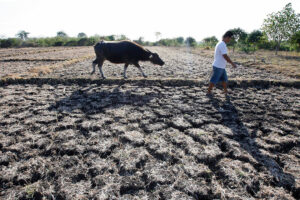PHL vulnerable to inflationary pressures induced by El Niño
THE PHILIPPINES is expected to be one of the most vulnerable economies to El Niño-induced inflationary pressures in Southeast Asia, according to BMI Country Risk & Industry Research. In the BMI Southeast Asia El Niño Exposure Index, the Philippines ranked sixth most vulnerable among 13 countries after Myanmar, Cambodia, Nepal, Laos and Malaysia. “(The Philippines […]

THE PHILIPPINES is expected to be one of the most vulnerable economies to El Niño-induced inflationary pressures in Southeast Asia, according to BMI Country Risk & Industry Research.
In the BMI Southeast Asia El Niño Exposure Index, the Philippines ranked sixth most vulnerable among 13 countries after Myanmar, Cambodia, Nepal, Laos and Malaysia.
“(The Philippines is) not the most impacted, but it’s certainly one of the bigger economies that will be impacted. So typically, the smaller economies are impacted more because they have a much higher share of agriculture as a share of (gross domestic product),” BMI Managing Director Cedric Chehab said in a webinar on Tuesday.
“The Philippines is a little bit more diversified than some of the smaller ones. But the Philippines also has a vulnerability (to El Niño).”
The BMI index analyzes the impact of El Niño on agriculture, rice production, consumption and imports, among others, based on previous El Niño events.
Myanmar (0.67), Cambodia (0.61), and Nepal (0.60) were the top three markets most exposed to El Niño-induced inflationary pressures and were subjected to upside interest rate risks.
On the other hand, China, Vietnam and Thailand appeared the most resilient to the potential agricultural impact of El Niño.
“For most markets, El Niño, via the causal channel of commodity prices, is associated with short-run inflationary pressures. For Southeast Asia, the heating associated with El Niño events is accompanied by reduced rainfall, relative to normal conditions, which has particular implications for the water-intensive cultivation of rice, the staple food item across much of the region,” BMI said.
Last week, the Philippine Atmospheric, Geophysical and Astronomical Services Administration (PAGASA) announced the onset of the El Niño weather pattern. PAGASA projections have shown a high probability of more than 56% chance that El Niño will be moderate to strong during the last quarter of this year.
A strong El Niño is expected to weigh on the Philippine economy, as agriculture usually contributes around a 10th to the Philippines’ overall gross domestic product (GDP).
The Philippines has also been improving in self-sufficiency in rice production and consumption, but the El Niño event in 2015 to 2016 has affected its progress, according to Mr. Chehab.
“The El Niño back then was quite tough and actually hit the Philippines more aggressively than other economies with rice production falling by about 10% at the time, compared to trend. So from a production perspective, the Philippines was hit relatively strongly there,” he said.
Agricultural output declined by 1.5% in 2016 amid a strong El Niño event.
In 2019, another El Niño weather event hit the Philippines, with agricultural damage reaching up to P8 billion.
“So I think that’s certainly an area to watch, in terms of upside risk to inflation in the Philippines,” Mr. Chehab said. “The risks to inflation and interest rates are to the upside based on those dynamics, and also potentially as a little bit of a downside risk in terms of agricultural output.”
National Economic and Development Authority Secretary Arsenio M. Balisacan earlier said that a “slight El Niño” could cause agricultural production to decline by 1-2%.
The Philippines experienced its worst El Niño episode in 1998, when the economy contracted by 0.5% as agricultural production fell by 7%. — K.B.Ta-asan


















